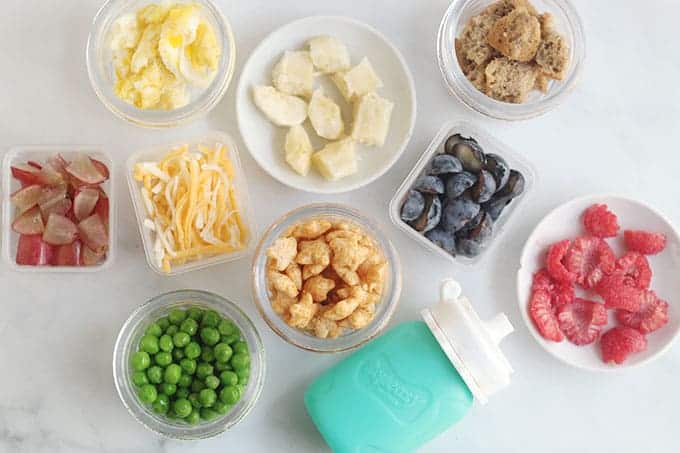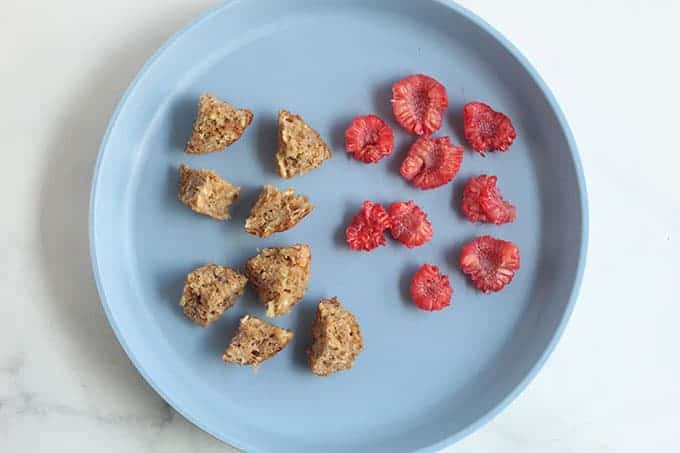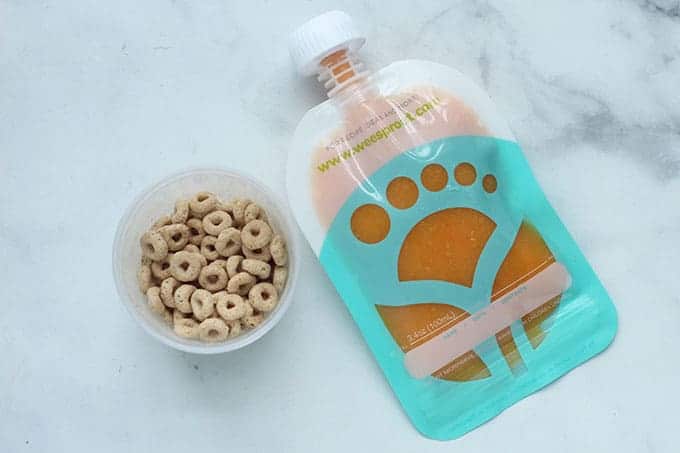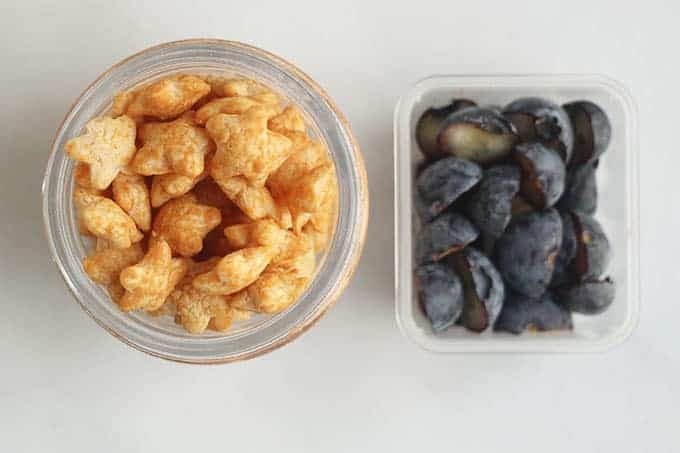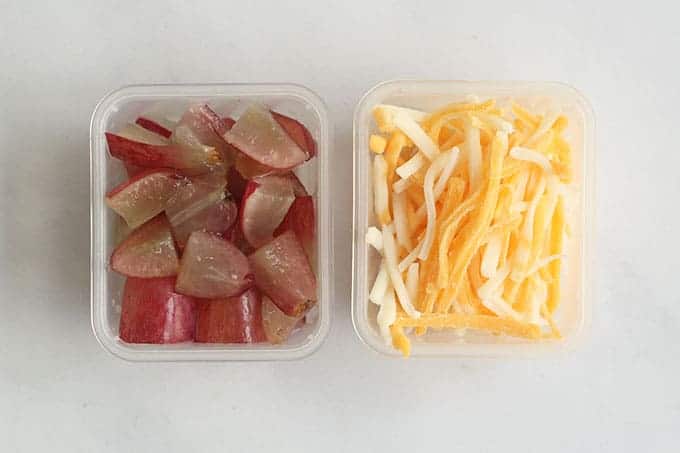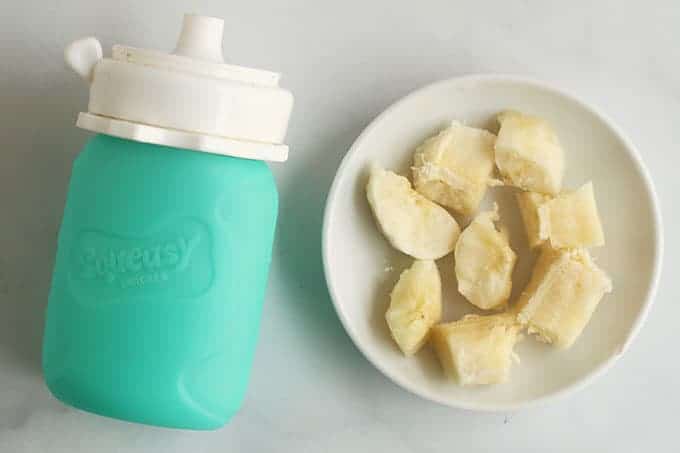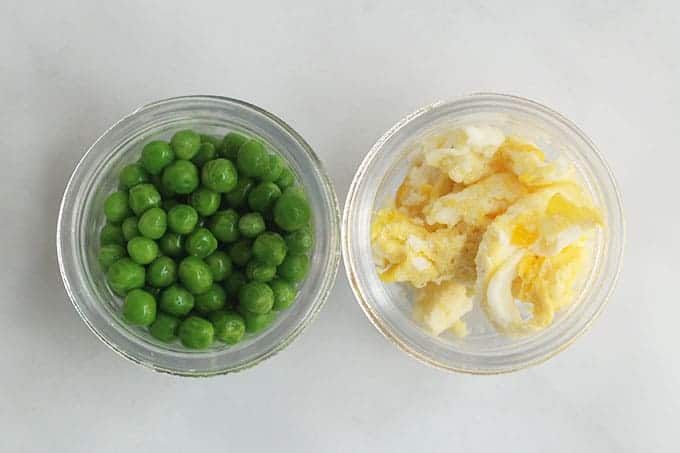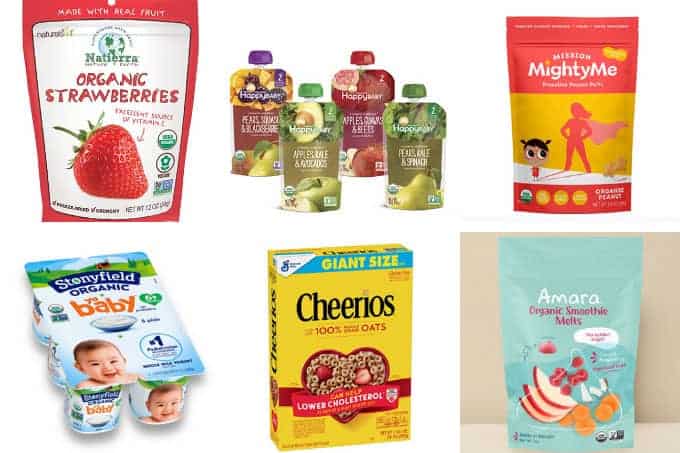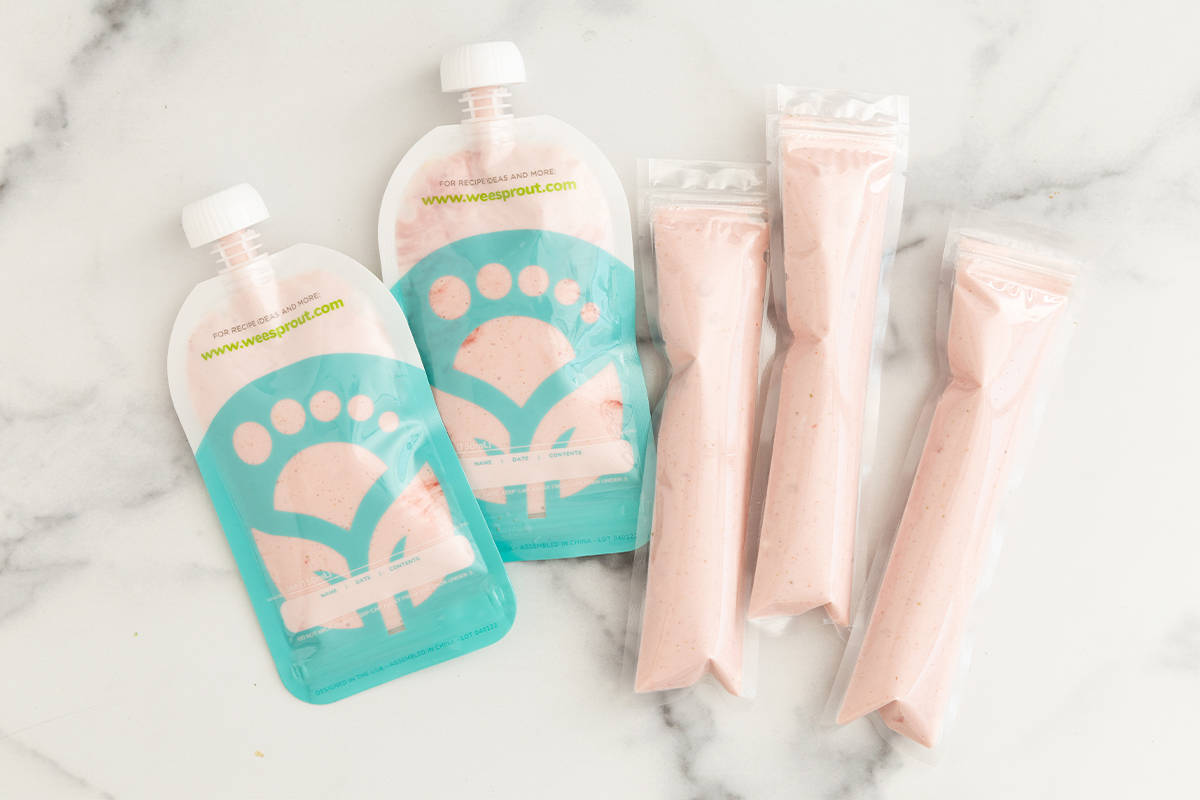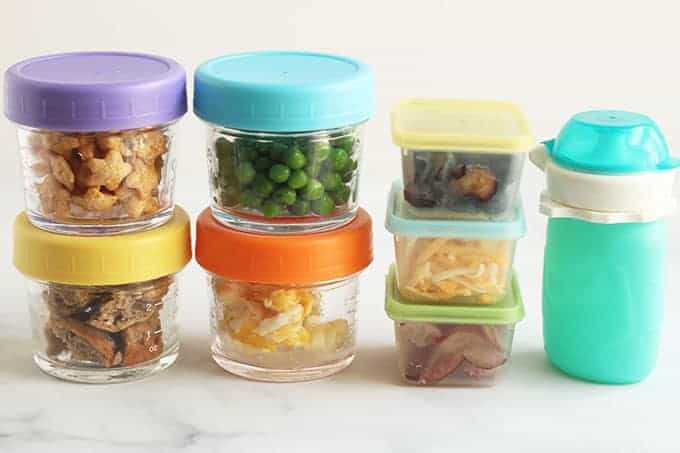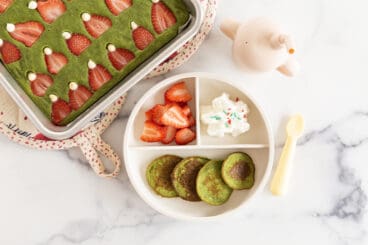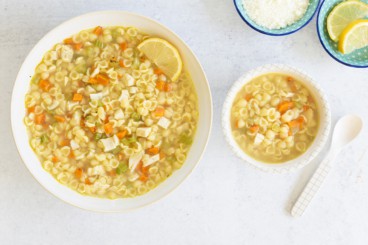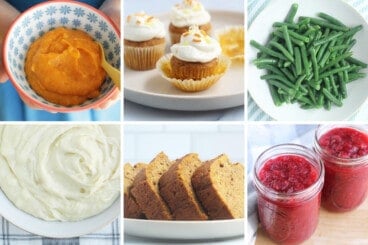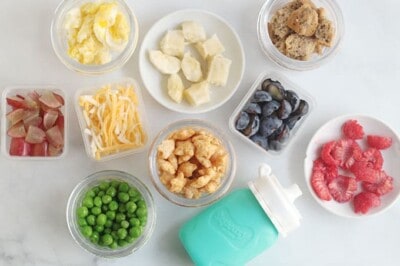Once your sweet baby has started solids, generally has the hang of things, and you’re ready to add in some snacks…it can be hard to know what to offer. This post is here to help! You will find easy baby snacks organized by food group, the best homemade recipes to try, and tips for serving food to this age group to ensure snacks are yummy and easy to eat. Depending on the baby, how much they are nursing or drinking from bottles, and the schedule of your day, you may or may not have time to add in snacks. You can start them around 9 months or at 12 months—whatever works best for your family and the appetite of your child. (You may also like Baby Lunch Boxes, Baby Breakfast Ideas, Baby Cookies, and baby-led weaning recipes.)
Snacks for 9 Month Old Babies
At about 9 months, babies develop the pincer grasp, or the ability to pick up small (think the size of a pea) pieces of food. This usually opens up a whole wide range of foods, including baby snacks, that babies can feed themselves. Those are primarily the types of foods you’ll find in this post, along with some pureed options to round things out. Sign up for our email updates to get tips and ideas sent to your inbox. TIP: Find my Master List of Early Finger Foods to refresh your memory on all of the many food options you can serve at any meal to babies starting around 9 months.
Snacks for One Year Olds
Many one year olds from ages 12 months through 16-18 months are in this same category of eating small pieces of finger foods, so any of these foods are appropriate for them, too. (Actually, they are appropriate for any age, though kids past that 18 month mark are better able to take bites from larger pieces of food.) TIP: Find my One Year Old Feeding Schedule, too.
Baby Snacks: Fruits and Veggies
These produce-based snacks are great options to have in the mix. I like to pair them with another food group if possible—though baby won’t always eat perfectly balanced snacks and that’s okay!)
Baby Food Pouches Sweet Potato Baby Food Warmed frozen peas Roasted Zucchini, diced small Diced Roasted Sweet Potato or Butternut Squash Fresh blueberries, cut in half or quarters Fresh raspberries, broken into small pieces Frozen fruit, warmed and fully thawed and chopped (such as blueberries, raspberries, strawberries, or mango) Freeze-dried fruit (it dissolves very fast) Banana, broken into small segments (they are less slippery this way as opposed to slices) Avocado, diced and mashed slightly (be sure it’s ripe and very soft)
Carbohydrate Snacks for Baby
Babies (and kids!) need carbohydrates in their diets, and we need to serve them often. Look for whole grains when possible to incorporate fiber and B vitamins. Combine with produce or protein at snack time.
Spinach Pancakes, diced (these are great to freeze and to warm one at a time) Baby Puffs Peanut Butter Puffs Sugar-Free Banana Muffin or Baby Muffins, diced O cereal (soften in nondairy unsweetened milk or yogurt as needed) Chex cereal (soften in nondairy unsweetened milk or yogurt as needed) Wwhole grain bread, diced with applesauce, fruit puree, or mashed avocado Baked Oatmeal Cups, diced Leftover pasta, rice, or oatmeal Sweet Potato Teething Biscuits
Protein Snacks for Baby
Incorporating protein and healthy fat foods into baby’s food is a great way to help them find their food filling and satisfying until the next eating opportunity. Look for full-fat dairy to ensure baby gets the fats they need for brain development. Combine with another food group at snack time.
Shredded cheese (thicker cuts are a little easier to pick up, mozzarella tends to be softest) Crumbled goat cheese Tofu for babies, diced and sauteed lightly or steamed Healthy Meatballs, lightly mashed or diced Shredded chicken, cut up finely (we love this Butter Chicken to share with baby) Ground beef, turkey, or chicken, cooked and broken into smaller pieces Lightly mashed beans Warmed frozen peas Scrambled eggs, broken up into small pieces Egg Muffins, diced Yogurt for babies (plain whole milk) Homemade Yogurt Melts Cottage cheese Mango smoothie (made with plain nondairy milk or yogurt) Baby popsicles
Snacks to Serve Baby in a Pouch
Reusable pouches are super handy for babies and one year olds—and older toddlers too! We love the 3.5 ounce Squeasy Gear silicone pouch since it’s virtually spill-proof. I started using it around 7 months with my kids to offer foods including yogurt, simple smoothies, warm (not hot) pureed soups, overnight oats, and all sorts of Homemade Baby Food Pouches. The WeeSprout BPA-free pouches are also great and are very easy to wash.
Best Store-Bought Snacks for Littles
In addition to the single ingredient foods you can buy at the store, these packaged snacks are convenient ones to have on hand for snack time.
Amara Organic Smoothie Melts Baby food pouches Baby Puffs Baby Yogurt (without added sugars) Chex cereal (soften in nondairy unsweetened milk or yogurt as needed) Crackers for baby Freeze-dried fruit O cereal (soften in nondairy unsweetened milk or yogurt as needed) Peanut Butter Puffs Whole-grain bread, diced, with applesauce, fruit puree, or mashed avocado
TIP: The Amara Smoothie Melts are a brand new snack option. They’re made with fruits and veggies and have a melt-in-the-mouth texture. My kids love them! (sponsored link)
Best Recipes for Healthy Baby Snacks
If you want to make some snacks at home that are a little more than just single ingredient foods, here are my top picks.
Apple Puree Applesauce Overnight Oats Apple Yogurt Baby Food Combinations (any of these work!) Baked Oatmeal Bites Banana Yogurt Peanut Butter Puree Pear Puree Simple Green Smoothie (use nondairy plain milk) Soft-Baked Granola Bars (closer to 12 months) Spinach Banana Pancake Sugar-Free Banana Muffins Sweet Potato Yogurt (use plain yogurt)
TIP: My favorite storage containers for kids snacks include the WeeSprout glass containers (shown below on the left with the colorful lids), the Beaba Clip Containers, and the Wean Green Storage Cubes.
Best Tips for Baby Snacks
Aim to offer two foods (or more) from different food groups at each snack so baby has the opportunity to have a mix of nutrients. Aim for at least one of the foods to have fat and/or protein to help baby feel satisfied. If a food seems too slippery for baby to pick up or they’re otherwise having trouble, put the food onto a utensil, cut it differently, or otherwise help them eat the food. Try to avoid serving meals or snacks when baby is tired or is specifically hungry for their milk feedings—it takes them a while to connect solid food as a way to satisfy hunger, so be patient with that process of learning. Start with small portions to avoid food waste and offer more according to baby’s unique hunger. It can take kids time to learn to like a wide range of foods, so offer a range of foods throughout the week—and offer foods they didn’t eat (making sure it’s easy to eat and tastes good) so they have the chance to learn to like them. Keep meals free from pressure and fun without forcing baby to eat a certain amount of food. Sit with baby as you can and model eating so they have someone to copy—they are new to this and the more information they have (visual, verbal, etc.), the better they can learn!
If you have any questions about feeding your baby or one year old, or any of these food suggestions, comment below and I will do my best to help! This post was first published December 2020.
